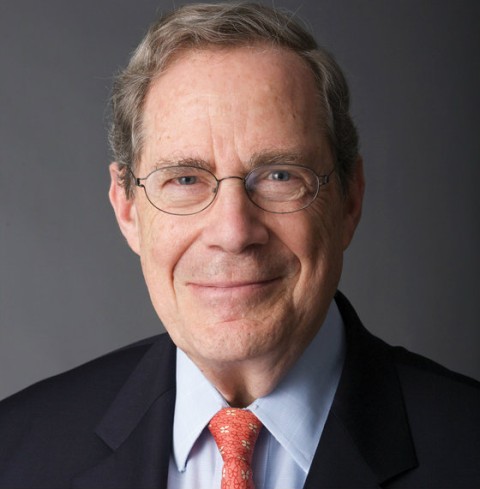The poor are still with us: Peter Edelman, policy advocate

Peter Edelman has worked in public policy for almost 50 years, specializing in issues related to poverty and welfare. In 1996, he resigned from his post in the Clinton administration to protest its support for welfare reform, a reform he believed would demolish the nation’s safety net for the lowest-income women and children in poverty. In 2012, he published So Rich, So Poor: Why It’s So Hard to End Poverty in America. He is a professor at the Georgetown University Law Center.
What have been the greatest antipoverty successes in the U.S. in the last 40 years?
The greatest antipoverty success without a doubt is Social Security. It has been transformative in making sure that people can retire and not be destitute. The program was made stronger in the early 1970s when Social Security payments were indexed to inflation and the Supplemental Security Income (SSI) program was enacted. The result of this is that the elderly are our least poor age group. Those programs are phenomenal successes.
Read our latest issue or browse back issues.
Food stamps are another enormous success. They are making a huge difference in terms of lessening the impact of the recession on millions of people. We now have more than 46 million people on food stamps—up by 20 million people since 2007.
The Earned Income Tax Credit and the Child Tax Credit are extremely important for low-wage workers who have children. Between those two provisions, a family with two children and one member with a minimum-wage job receives about $7,000 a year of added income.
Something like 40 million people are being kept out of poverty by these programs. So it’s ridiculous to say that federal policies are failures or don’t work. Someone who says that is either ignorant or deliberately twisting the truth.
How should we define success in antipoverty legislation or policy?
Basically, success is keeping people out of poverty who would otherwise be in poverty—and to do so preferably by seeing that they have jobs. But success is not measured only in income. Having better health as a result of Medicare and Medicaid is important in and of itself. Having assistance to go to college, which creates the opportunity for a person to achieve more, is important. Having access to child care is very often the sine qua non for a single mother to succeed in the workplace. Getting assistance with housing and having a decent roof over one’s head are valuable in themselves. Antipoverty policies achieve much more than increasing people’s incomes.
What are the greatest failures in fighting poverty?
The greatest failure is in helping those at the very bottom of the income ladder. In 1996, we changed the system of cash assistance for mothers and children, which resulted in the virtual disappearance of cash assistance in more than half the states. We’ve gone from having 68 percent of children who live in poor families receiving cash assistance down to 27 percent. In more than half the states, fewer than 20 percent of children from poor families receive such assistance. The most dramatic effect of this is that there are 6 million people in the country whose only income is food stamps. The so-called welfare reform in 1996 has had a devastating effect that is not widely enough understood.
We also haven’t done enough to help low-wage workers. We now have a flood of low-wage jobs in the country. A third of Americans, 103 million people, are working at jobs that pay only twice the amount of the poverty line—that’s $38,000 for a family of three. We have a lot of policies aimed at assisting low-wage workers, so it is not so much a policy failure as it is not having kept on top of the trouble caused by having so many low-wage jobs.
With welfare reform in the 1990s, the Temporary Aid to Needy Families program replaced cash assistance with programs designed to help people find work and limiting the number of years people receive assistance. How does this approach function in an economy with such a high unemployment rate?
Some people who voted for TANF in 1996 thought that somehow there would be enough jobs for everyone. For the first few years that the program existed, the economy was in good shape and jobs were reasonably available. But even then, 40 percent of the people who went off welfare in the program’s first four years ended up without a job and without welfare. Only 60 percent found jobs. So the reform was never totally satisfactory.
After 2000, the number of low-income single mothers who had work began to go down, and it has decreased steadily in the past 12 years. In 1996, we went from having a legal right to welfare to its being entirely at the states’ discretion. I wrote at the time that when a recession came there would not be an adequate use of TANF to help people, and that turned out to be true.
What do we know about people who lose their TANF benefits after reaching the time limit?
The bigger problem is in getting onto the TANF program in the first place. Large numbers of people who qualify by virtue of their income are turned down at the TANF office for no particular reason. It is just assumed that they ought to be able to find a job. There is no legal obligation to help them, so they get turned down.
The people who get turned down are almost entirely women. They are mainly people who would like to work but who either can’t find a job or who encountered some barrier to their working. Among such barriers are a lack of child care, a lack of transportation, maybe some added responsibility like caring for a chronically ill child or an elderly or infirm relative, or having personal problems that include depression, domestic violence or drug and alcohol problems that need to be attended to. There are a lot of reasons why someone can be in a low-income situation. There is no one story.
Then there is the problem of people working but not earning enough to get by. That is a second-stage problem, if you will. Half the jobs in the country pay less than $34,000, and that’s for a full-time, year-round job. A quarter of jobs pay less than the amount of the poverty line, which is $23,000. A huge number of jobs don’t pay enough to live on.
A single mom who goes to work at such a job is definitely better off by working; it is just that she is not sufficiently better off. The minimum wage has not been raised for a number of years and is falling behind because of inflation. The minimum wage nationally ought to be about $10 an hour instead of the current $7.25. A single mom has the problem of having only one wage earner in the family. If there is a mom and a dad, they can combine two low-wage jobs and do reasonably well.
If you could build a new welfare system from the ground up, what would it look like?
It starts with education. People not only need to finish high school, they need some sort of postsecondary education. In order for people to get the best jobs, we have to back up and ask about macroeconomic policy. Do we have a full employment policy? What is our trade policy? What is our immigration policy? These things all have a bearing on what jobs will be available in the United States and what they pay.
We need to make a particular effort in the area of early childhood development. What happens before age five is crucial.
And there has to be a safety net. We do reasonably well with people who have a job by adding other income to theirs, but we do a terrible job with people who are temporarily out of work—let alone those who have long-term unemployment spells.
What goes on in communities is extremely important—both the things that are done through state and local government with some federal money and the things that people are doing in nonprofits and as volunteers—and of course what people do for themselves. A really important question is how you create a set of public policies that incentivizes and supports people. What happens at the local level in mentoring and tutoring, in neighborhood development and in public private partnerships, in community colleges—all of that is part of the answer.
Are there any silver linings to the 1996 welfare reform?
The upside of the 1996 law—and this positive is overshadowed by the fact that many states have done punitive things—is that some states have done a constructive job in treating people as individuals. Most people are good candidates for work, but they need support. Most especially, they need child care if they have preschool children. But if they need education and training in order to get a better job, they ought to be able to do that without losing the benefits they are receiving. A large number of states do not allow training and education for TANF recipients. That is completely myopic.
We have considerable data showing that people without a lot of work experience are not likely to succeed with their first jobs. Transit is a very important aspect of achieving success in many communities. Having a car in many parts of the country is an absolute requirement to be able to hold a job.
In 2005, when the welfare law was reauthorized, Congress simply didn’t look at any of the states that showed what you have to do if you want to run a good program.
What social and economic changes, outside of government policy, should we look at to understand today’s economy?
In 1973, statistics began to reflect the process of deindustrialization and globalization. That was the beginning of a pronounced shift from good-paying industrial jobs to low-paying service jobs. It was like putting a frog in water and very gradually turning up the heat. If you drop the frog into boiling water, it will hop out and save itself, but if you turn the heat up slowly, you will boil it to death. We’ve essentially had that happen in the area of jobs: our policies did not keep up with the gradual changes in the job market, and we woke up and found that millions of people have terrible jobs—and their wages have not kept pace with costs. The wage of the median job has gone up only 7 percent in real terms since 1973. Clearly, there was growth in the economy during that time, but the income growth was all at the top.
Do you think we are ready for a national conversation on poverty?
I don’t think we have laid the ground for a conversation on poverty. The Occupy movement was helpful, because it increased consciousness about the degree of inequality. But I am not sure that people understood that those at the bottom of the 99 percent are in a quite different situation from those at the top of the 99 percent.
We need an organized grassroots movement to demand changes in government and business policies. We need to tell the stories of poverty. I think people just don’t know the facts. Even people who have low-wage jobs don’t understand that the problem is a structural failure in the labor market.
What experiences most shaped your understandings of poverty in the U.S.?
I became aware of poverty in a personal way when I worked for Senator Robert Kennedy. I was one of his legislative assistants. He had a passion for issues of poverty and race. Very shortly after he became a senator, he traveled around to listen to people about the struggles that they were having. I received a profound education through accompanying him on those trips. The most dramatic was in the spring of 1967, when we went to Mississippi for hearings on the extension of the Economic Opportunity Act, and we saw children there who were close to starvation. It was a searing experience, and it had a life-changing effect on me.
Are there any current political leaders who have had that kind of personal and direct interaction with poverty?
Some individual members of Congress do care a great deal about poverty and work hard on these issues. Some mayors, governors and members of state legislators have that passion. We don’t have a preeminent figure now. Paul Wellstone was someone who reminded me of Robert Kennedy and who put extra energy into the issue of poverty. It was a huge loss when he passed away. When we don’t have that kind of leadership, it is really the responsibility of all of us to provide the commitment and the political impetus for change.







